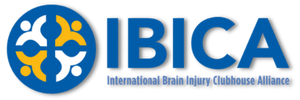Do We Need a Clubhouse?
This is a very important question. While many people are captivated by their first Clubhouse visit, the program may or may not be the best fir for people in your community. Clubhouses are one of the many different support services that people who experience disability following brain injury may benefit from. It is essential that people in your community conduct a needs assessment to evaluate the specific needs of individuals with disability in your region and existing services. You may find that a Clubhouse is right for you, or you may find that a different approach is more suitable. Don’t get stuck on one program or approach. Be open minded and listen to the needs of all people in your area.
Can Our Region Support a Clubhouse?
A population base big enough to support a Clubhouse and a strong awareness of the ongoing need for community support of people living with disabilities following brain injury are crucial. Although there are no exact numbers, communities/regions with a total population of 150,000 seem to do best. In addition to overall population size, these communities usually have a variety of transportation, social service and other services that work well with a Clubhouse. Support for a Clubhouse can come from groups of people who have brain injuries, those who assist them, as well as government agencies, private donors or foundations, service providers, business leaders and others.
How Large Does a Clubhouse Have to Be?
It generally takes at least 7 members on a given day to reach a critical mass of community to get the work of the day done in the Clubhouse. As membership grows, the Clubhouse becomes even more engaging and dynamic. It often takes a few months to reach this critical programming mass. Some Clubhouses start up on a part-time basis as membership and resources grow. However, all Clubhouses are expected to grow rapidly into full time- five days a week programs.
